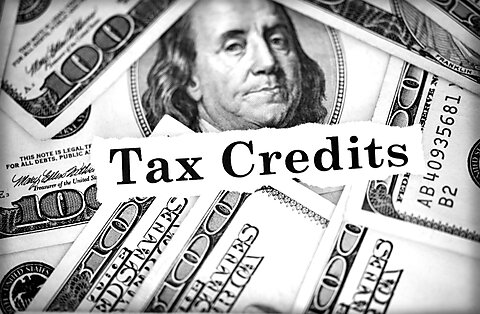The New Markets Tax Credit (NMTC), enacted in 2000, was designed to spur investment in low-income communities by offering tax incentives to private investors. Touted as a market-friendly alternative to traditional spending programs, the NMTC has authorized $76 billion in credits over 25 years. Despite repeated temporary extensions and bipartisan support, the program’s track record is marked by high costs, bureaucratic complexity, and underwhelming results.
As Congress debates the future of the tax code in reconciliation, the House-passed bill chose not to extend the credit program when it expires at the end of this year (2025). The Senate’s version of the bill would make the program permanent at an annual cost of $5 billion.
Evidence suggests the program has failed to deliver transformative development; mired in administrative complexity, it often funds projects that would have happened anyway and the benefits primarily flow to investors and financial intermediaries, not communities in need. After two and a half decades of trial and error, Congress should finally let the program expire.
Complex and Costly Design
Administered by the Treasury Department’s Community Development Financial Institutions (CDFI) Fund, the program allocates NMTCs to certified Community Development Entities (CDEs) who sell the tax credits to investors, most often banks and large developers. The income tax credit is worth 39 percent of the investment and is claimed over seven years. In return for the funding, the CDEs invest in a wide range of real estate and business ventures in designated low-income communities.
A community can qualify by meeting a number of different metrics, including a poverty rate of at least 20 percent, a median family income that does not exceed 80 percent of the area’s median family income, or a low population near other designated tracts. According to the Tax Policy Center, 43 percent of census tracts qualify for the NMTC, and by 2020, about 14 percent of eligible tracts had received at least one of more than 7,100 subsidized projects.
Moreover, most NMTC-financed projects also receive funding from other federal, state, or local sources. A 2014 Government Accountability Office (GAO) report found that 62 percent of NMTC projects between 2010 and 2012 received additional government aid. Since then, Congress has also created the Opportunity Zone program, another overlapping investment incentive with weak results. Navigating the regulatory hurdles of dozens of disparate program rules requires highly specialized legal and accounting services to access the government resources and ensure compliance.
Mixed Evidence, Modest Results
Evaluating the NMTC’s effectiveness has been a challenge. Data are sparse, incomplete, and not consistently made public. What evidence that exists suggests the NMTC delivers limited benefits, often at high cost, with little assurance that the investments it subsidizes are necessary, effective, or well-targeted.
A comprehensive evaluation of early projects (pre-2007) by the Urban Institute (funded by the government) notes that “there are no explicit statutory or regulatory provisions prohibiting the use of NMTC investments in projects for which other financing is available.” The study estimates that only between 30 percent and 40 percent of projects would likely not have proceeded without the NMTC. Other studies using different techniques similarly find evidence that the NMTC crowds out or shifts private investments instead of primarily representing new economic activity.
Using various methods, both the Urban study and a study by Cornell University economist Matthew Freedman find that it requires at least $80,000 in NMTC investment to create a job and $37,000 to lift one person near the poverty threshold above it (in current dollars). In contrast, programs like food stamps and the Earned Income Tax Credit (EITC) achieve similar poverty alleviation at a cost of 30 percent to 40 percent of the NMTC.
Results on other margins are similarly underwhelming. A 2018 analysis found no detectable improvement in food access. A 2016 paper reported gains in retail and manufacturing jobs but losses in service and transportation employment. The Cornell study found small improvements in poverty and unemployment rates but no effects on other metrics such as property values or job quality (at a high cost).
Many of the most high-profile NMTC projects have included boutique hotels, aquariums, and sports stadiums with exorbitant returns on investment. A 2014 report from the late Senator Tom Coburn documented a wide array of questionable uses, including a classic car museum in Washington state, a baseball stadium in Kentucky, a streetcar in St. Louis, an NFL Youth Center in Indianapolis, and an expansion to the world’s largest aquarium in Atlanta. The GAO notes an example in which a NMTC recipient appeared to earn a 24 percent annualized rate of return on a $500,000 investment.
If any of these projects add value to local communities or an attractive return for investors, then those communities and private credit should fund them instead of federal taxpayers.
It’s Time to Let the New Markets Tax Credit Expire
The House of Representatives would allow the NMTC to expire at the end of 2025 by leaving it out of its reconciliation package. While the Opportunity Zone program is temporarily renewed, the House’s approach is at least a step toward avoiding the costly layering of overlapping incentives. The Senate, by contrast, has proposed making both programs permanent features of the tax code.
After two and a half decades and tens of billions of dollars, the NMTC may have benefited some communities and even more banks and developers. But the bulk of the evidence points to high costs, limited transparency, and substantial waste. If policymakers are serious about reforming the tax code and promoting economic growth, they should begin by phasing out programs that fail on both fronts.
Nathan Throneburg contributed to this piece.
















